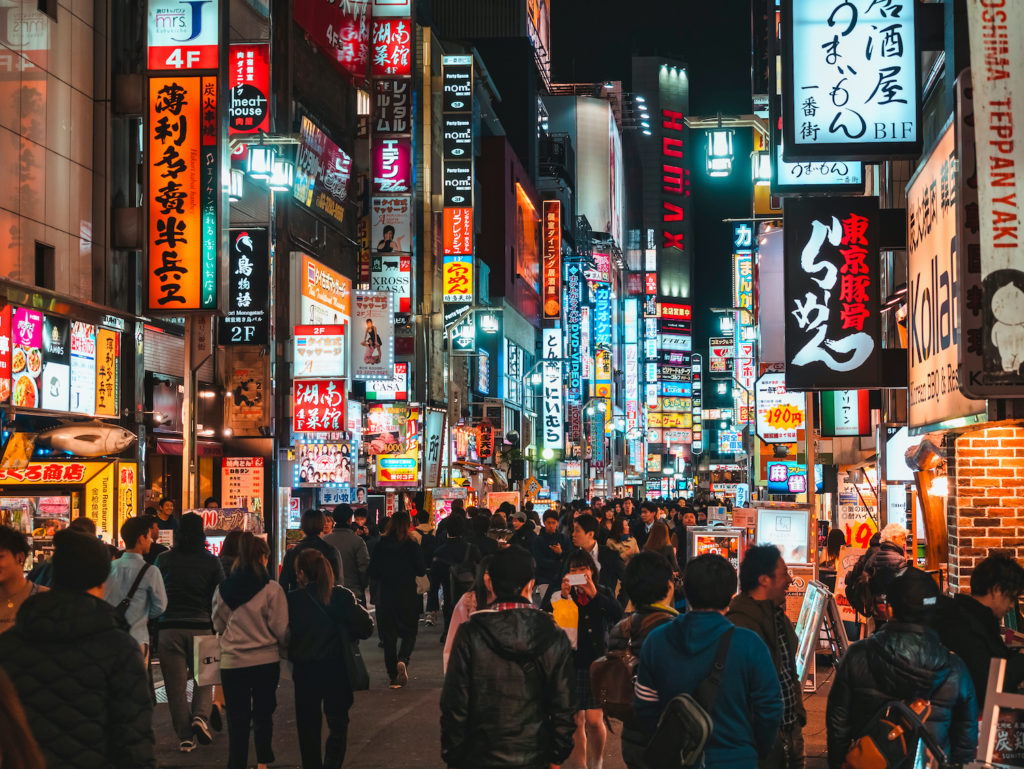
Yakuza is Japanese mafia whose activities are permeated throughout the Japanese society. The police call them Violent Groups while the Yakuza call themselves Chivalrous Groups, which is their true face? Let’s take a look at their history from their origin, structure, and culture.
Table of Contents
1. Overview of Yakuza
What is the Yakuza? In the first place, the yakuza is spontaneously gathered people who can’t adapt themselves to the society, forming groups and organizations to get by to the period background.
There is no one lineage which we can trace back to the yakuza roots. The Japanese mafia has six times the size of the Italian Mafia and considerably larger than the Mafia in the United States.
Many of their money-making activities are illegal but they also run legitimate enterprises. Yakuza members tend to be from those marginalized in Japanese society called burakumin.
They have been treated as non-humans, the equivalent of the untouchables in India, who had no choice but to perform tasks like slaughtering animals, butchering, tanning skins, making leather products, digging graves and handling corpses.
Other members include outcasts, misfit of the Japanese society, and ethnic Koreans, they joined the Yakuza as a means of escaping from poverty and disgrace. For them, it’s the only place they are accepted as workers and humans.
They have been always counterpart groups, organizations or reactionary insurgent gangs against that of authority.
They are semi-legitimate organizations and accepted by people to some extent, part of the reason is they are an effective method of keeping individual troublemakers off the streets.
Their hierarchical structure requires potentially out-of-control youngsters to adhere to a strict code of behavioral conduct, which is a counter-intuitive but efficient way of insulating the Japanese public against random acts of violence.
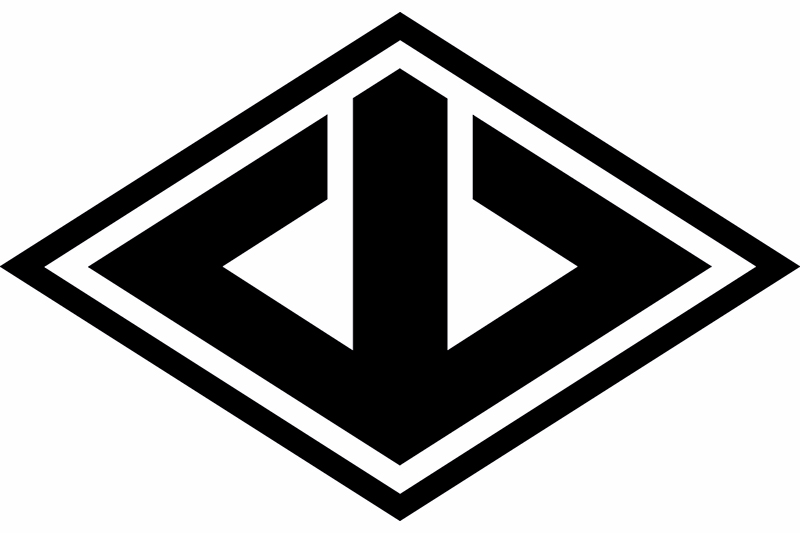
The Yamaguchi-gumi, now the largest yakuza syndicate in Japan, began as a labor dispatch agency and as an association of labor unions on the docks of Kobe in 1915.
2. Origin of Yakuza
Although its definite origin is not entirely known, they most likely formed their organizations around the mid-Edo period (1603-1868).
Below is the list of these groups which are believed to consist Yakuza today, the fact of the matter is Bakuto and Tekiya are considered to be the direct ancestors of the yakuza.
We will take a look at groups and organizations which have influenced forming the modern yakuza in the chronological order. All of them contributed their own customs and traditions to a certain extent.
Kabuki-Mono – Crazy Ones
At the end of the Muromachi period and into the Edo period (around the 14th- 15th century), Kabuki-Mono appeared from the lowest rank of Samurai.
They managed the groups working as the negotiator to the employer (Samurai lord) and as coordinators when troubles occurred.
In peacetime of the Edo period, they turned to be just reckless and roguelike bandits.
They were known as masterless samurais – ronin. As the time of peace required no more samurai, they had to become merchants, civil bureaucrats, or philosophers.
However, not all of them was able to adopt the new life.
While putting a plain and a simple outfit was the norm for men, Kabuki-Mono often wore vivid women’s kimono like a cloak, used the animal skin for the clothing to make them stand out on the street.
Most of them made up a group consists dozens of people, ignoring the meal bill, picked a fight with people to rob money of, stealing and seizing, known as a group committed an outrage.
Members didn’t hesitate to share their stories of violent activities, which often led other violent incidents.
They were willing to do out of the norm such as wrestling, dancing on the street, engaged in homosexual activity and smoking cigarettes.
They put utmost importance in the bond and trust among fellows, had a unique perspective of life and aesthetics.
Most of the members were servants for samurai and they remained poor and unstable.
When some battle occurred, they used to go working on the battlefield as the laborer and loot when they could and Tokugawa shogunate cracked down on them.
It’s considered that Kabuki has its roots in them as Izumo-no-Okuni adopted their way of life into her play, it became pretty popular all over Japan in 1603.
Machi-Yakko
The Machi-Yakko were bands of young townsmen who organized in order to fend off the increasingly frequent attacks by the outlaw samurai.
The townspeople cheered for them, all of them were glad to see fellow commoners stand up to the samurai and they became town’s hero.
It’s a counterpart to Hatamoto-Yakko, which was the authority’s violent groups. Machi-Yakko consisted of ex-samurai who got laid off because of the reconstructing of the system. They worked as agents of labor dispatch service.
They helped the poor, safeguarded the honor of women and kept peace in the neighborhood by raising their swords against thieves, dishonest businessmen and corrupt samurai such as Hatamoto-Yakko.
No wonder the Yakuza wants to relate themselves to Machi-Yaako.
Machi-Bikeshi – Local Fire Brigade
Machi-Bikeshi was civil firefighter squads which were formed under the reign of Tokugawa Yoshimune. They consisted of highly skilled steeplejacks or construction workers.
Stabilizing the economic situation was in urgent need at the time, establishing the effective fire-fighting system was an important task for the shogunate since once the fire broke out, its economic damage was huge.
At the end of the Tokugawa Shogunate, the firefighting squads directly under the Shogunate control diminished to only one, Machi-Bikeshi were in a total control of Edo in terms of protecting it from the fire.
Their task wasn’t confined in just extinguish the fire but also engaged in security work in Edo when Commodore Perry arrived in Japan with the black ships from the Indian Ocean.
They worked as the security guard in the Boshin War (Civil war) and were ordered to destroy the castle of Choshu in Edo, the Shogunate intended to incorporate them as a force.
Bakuto – The Gamblers
Bakuto were the gamblers who were in the lowest social class as the gambling was strictly forbidden in the Edo period.
Many small gambling houses cropped up in abandoned temples or shrines at the edge of towns and villages all over Japan.
Most of these houses ran loan sharking businesses for clients and they usually maintained their own security personnel.
The term “Yakuza” originates from Oicho Kabu, Japanese blackjack-like card game, the worst hand of 8-9-3 is referred to ya-ku-za. The word originally means ‘good for nothing’.
Tekiya (Yashi) – Huckster
Tekiya originated in the Edo period or probably earlier, from the networks of itinerant peddlers called “yashi” whose social position was quite low.
Originally, groups of Medicine merchants, they later came to peddle all kinds of shoddy goods and engage in all kinds of activities, from fortune-telling to crime.
The most famous one is “Gama no Abura-uri” (Frog oil peddler), they pretended to hurt one’s arm by a sword, then applied this miracle balm on the wound showing people it’s been healed. They did a fight performance with a sword as well.
During Shinto festivals, these peddlers opened stalls and some members were hired to act as security.
Matsuri (festivals) is where alternative worlds can be encountered or temporarily realized. Tekiya plays the role of the vagabond merchant, supplying mystery, information, goods, and stories of that other world (often underworld).
Without being told so, children feel the sense of excitement of the festival and the sense of outlaws when they buy stuff from them.
Shinto Shrine: History, Architecture, and Shrine Crest
Yakuza in Early Industrial Japan
As the time required, large laborers were in desperate need, coal mines, docks, large construction sites were flooded with tough men from all around Japan.
Competent individuals began forming brigades and there were a lot of conflicts among them. Because the police were short on staff, they became a kind of delegated security force.
The Meiji government found a use for the Yakuza as to aid to ultranationalists, who took a militaristic role in Japan’s adoption of democracy.
Various secret societies were created and trained militarily.
They began to cooperate with the authorities in return for services and favors and to ease the harassment from the authorities.
The ultranationalist reign of terror lasted into the 1930s, consisting of several coups d’etat, the assassination of two prime ministers and two finance ministers while there were repeated attacks on politicians and industrialists.
Yakuza in Postwar Japan
After Japan lost WWII, black markets were bubbling on the scorched ground. Groups of Tekiya (the yakuza) gained its strength over the period.
Where there was a breakdown in law and order, the groups called Gurentai held the field as there was a power vacuum in the government as the occupation swept away the topmost layer of control in government and business.
The Gurentai was notorious for its aggressiveness as they went so far to use threat, extortion, and violence in their activities.
The government used one Gurentai as a controller of Korean labor, even though they were apprehended with criminal items.
Their work ethic, do whatever it takes to make money, influenced the Yakuza (both Tekiya and Bakuto) since the Gurentai encroached their territory.
Both Tekiya and Bakuto began to be seen as the Yakuza from this period largely thanks to the Gurentai.
In the rapid growth of the Japanese economy, “corporate associates” often known as “front companies” were born in dealing with the entertainment industry.
Since its birth, they sought ways to strengthen their organization by keeping close ties to the authority of the time.
3. Hierarchic Structure – Yakuza
The Yakuza organization is structured much like a common family in traditional Japan that one respects its senior.
What’s the difference between the usual family system and the Yakuza’s is you can’t go against the seniors unless you are ready to risk your life. You can say it’s Confucian seniority realized in an extreme way.
The clan chief is called Oyabun or Kumicho (Father), beneath him are all Kobun (Children) of his such as Wakashu (youngsters) and Kyodai (brothers).
Their bond is much stronger than the similar concept of mentor and protege, through a ritual of “sakazuki” we see below.
All the members of the clan obey the Oyabun loyally and in return, he protects them against all dangers, provides them with advice and help.
The Oyabun has a chief advisor, the staff of advocates, accountants, secretaries and other advisors.
The Wakashu’s boss is called Waka Gashira, he is number two of the clan after the Oyabun.
He acts as a middleman to see that the Oyabun’s orders are being accomplished. Additionally, he often controls their own sub-gangs and over time can move up in the structure.
There are countless instances of members going to jail or even laying down their lives at the instance of their boss.
If one of the children disobeys the Oyabun’s order, he can expect to be severely punished.
On the other hand, if he is obedient and complies with the rules set forth by the Oyabun and other bosses, he can expect promotion and financial rewards.
Besides the major yakuza groups, which work in loyalty, there are also about a 100 minor groups working under them which pay their respective Yakuza groups their monthly association fees.
Similar to the old Bakuto groups, some of them began as a simple coalition of professional gamblers and there are other illegal operators who work by contract.
4. Yakuza Culture
The Open way of announcing the group’s name, location, and affiliation by signboards and business cards are most astonishing to foreign observers.
As often seen Yakuza Movies, their body posture, the gait and the stare are one of the typical Yakuza cultures, which denote three messages: withdrawal, defense, and threat.
Rituals
Yubitsume is the act of cutting off the tip of one’s little finger as a sign of apology or as a punishment for violating the yakuza code of conduct.
If the offending member does something worthy of punishment again, he must cut off the finger once again at the next joint.
It ensures that others would be afraid to do the same and for the worst offenders, there was the death penalty while the second-worst punishment was expulsion.
This act was thought up by the Bakuto as a means of getting gamblers to pay their debts. It also serves to make the offender more dependent on his boss as one cannot grip on a katana or weapons firmly enough.
However, it is not as popular as it used to be as modern Yakuza prefer not to be recognized as the yakuza.
They in the broader field and in recent years, prosthetic fingertips have been developed to disguise this distinctive appearance.
Sakazuki is another, yet important initiation ritual in the yakuza world.
By exchanging a single cup, they express the will and determination of the members to strengthen the bonds of the organization and the complexity of the rank and function of the relationship.
The ritual is highly theatrical, elaborate and symbolic event, somewhat resembles Shinto wedding ceremony.
At one end of the hall, there is an altar, above which hang three scrolls representing three deities. The middle scroll depicts Shinno, the patron deity of Tekiya. On the right is Amaterasu, the Sun deity, and on the left, the present emperor.
Shinno is worshiped only by Tekiya. Bakuto worship other deities, such as Hachiman, as their patron deities.
All yakuza groups, however, worship Amaterasu and the present emperor, which are purely native in origin and the ultimate symbols of Japanese culture.
Agriculture is a typical sedentary occupation, while medicine, music, and the market have bivalent attributes which Shinto represents.
In pre-modern Japan, music was often than not performed by wandering, often blind, musicians called biwa-hoshi or goze. Medicine was sold by Tekiya ancestors, Yashi, in their remotest history.
Sake (rice wine) is seen as a bond between a man and deities, formed from the blessing of a good harvest and this same bond could cement the relationship between people.
It is often performed at Shinto shrines, so the historical link gives the yakuza initiation ritual a religious significance.
Tattoos
Originally, Japanese tattoos were seen on the specific occupation such as plasterers, construction workers, street vendors, carpenters, firefighters, fishermen, fish dealers, gamblers, boatmen, geisha, anyone who had a chance to expose their skin in the hot humid summer.
Since they often were seen some of their body parts revealed, they developed the unique style of tattoo called body suit to decorate their bodies.
Their tattoo were called Shisei or Bunshin but not Irezumi. The term Irezumi was meant for criminals performed in the Edo period strictly distinguished from the art of Shisei.
When they began tattooing criminals with specific designs such as a circle, a cross mark, or merely a line on their arms and foreheads, the image of the tattoo was contaminated and people started to assume all the tattoos as somehow negative.
The traditional tattoos were banned by the Meiji government in the pursuit of modernization. This action led to the extinction of the art of tattoo and the ban was lifted by GHQ.
However, the fact that tattoos used to punish or stigmatize criminals had a tremendous impact and the image of tattoo.
Therefore, Yakuza have been intertwined and associated with each other heavily by the late 19th century, the tattoo (Irezumi) came to be the exclusive trademark of Yakuza.
Yakuza tattoos can take decades to complete and its cost is extravagant. Any members who boast his full-body tattoo shows off his manliness who can be tolerant of extreme pain and financial wealth.
The majority of the designs derived from Japanese mythology and histories like dragons or koi fish, which represent wealth and prosperity, samurai as moral code or geisha represents fertility and good fortune.
Japanese Mythology: Creation of the Universe and Kami
Still often hand-poked, that is, the ink is inserted beneath the skin using non-electrical, hand-made and hand-held tools with needles of sharpened bamboo or steel. It can create beautiful graduation, which electric one cannot.
Tattooing as a punishment was outlawed in 1870 and after that, it became more popular in pleasure quarters. It is a self-inflicted stigma. One declares oneself an outlaw and outsider.
Code of Ethics or Ninkyodo
Ninkyodo or “The way of the Yakuza”, code of ethics of the yakuza, is what used to make them different from sole violent groups.
Their code of rules include the prohibition of using or selling drugs, theft or sexual assault, robbery or anything indecent.
However, it is highly questionable whether modern-day Yakuza follows those code. Extortion and blackmail are out of their list of rules.
Originally, the rules are intended to prevent Yakuza members from being involved in ordinary street crime, such as purse snatching or mugging.
However, the reputation of the Yakuza keeps most of these thugs too scared to try anything that goes against the family, such as revealing names or betraying family members.
If ever they did such deeds, they could expect retaliation, both inside and outside prison.
The trust in one another, between Oyabun and Kobun, has sometimes been broken and resulted in some members being imprisoned.
In the drug business, it requires many members to keep the business going that it stands to reason that not everyone can be trusted.
Some of them are just street thugs who are not even a part of the Yakuza, which can put the Yakuza members at some risk of exposure.
One thing for sure, once they lose their spirit of “Ninkyodo”, they are merely thugs or ruthless criminals who don’t have any excuse even to be a necessary evil of the society.
Their code is fading since the largest yakuza syndicates, Yamaguchi-gumi deals in narcotics, drugs now.
Movies
The image of the yakuza owes to the yakuza movies in a great deal.
The famous and renowned movie director, Juzo Itami, committed “suicide” in 1997.
He left the cryptic suicide message on his computer, my death will prove my innocence. Many believed he was told at gunpoint to jump off the building.
Juzo Itami directed several films related to the Yakuza activities already.
And at the time of his death, he was working on a film examining the relationship between religious organization, Soka Gakkai, and the Yakuza group, Goto-gumi.
Before him, Yakuza Movie was all about praising their code of ethics, often starring a man of chivalry as a protagonist.
However, Juzo Itami changed this picture entirely and depicted their negative nature as it is.
Itami assured the Yakuza as merely thugs who exploit from the weak. He also addressed the issue of medical waste treatment right before his sudden death.
When we think of modern yakuza movies, Takeshi Kitano is a popular figure, who depicts the Yakuza extremely violently to the point it feels almost funny.


He was born in the downtown in Tokyo, where he had many chances to contact with the Yakuza who even preached morals.
However, he says that he makes the yakuza movies, which make them look bad in the end. Brother is one of his movies that he depicted the Japanese mafia.


5. Modern Yakuza
There are 21 major groups with more than 53,000 members, including three largest groups of the Yakuza in Japan, the Yamaguchi-gumi, the Inagawa-kai, and the Sumiyoshi-kai.
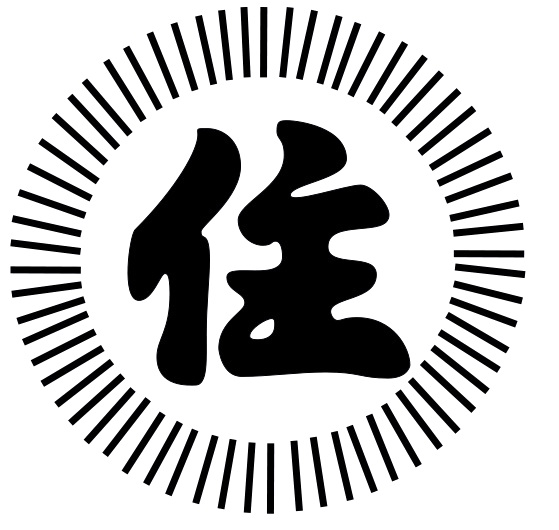
The yakuza, the Japanese mafia, is semi-legitimate organizations which are not outlawed but are regulated and monitored.
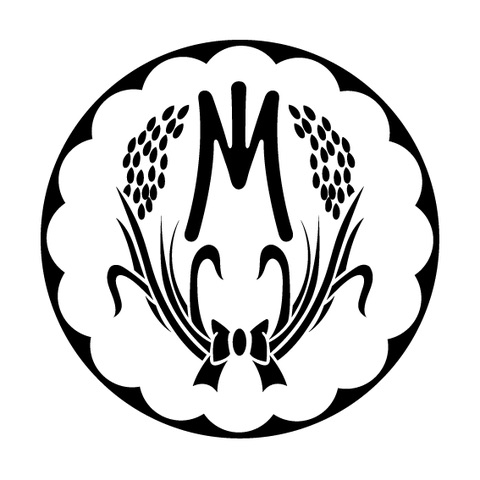
Men in tailored suits and a clean-cut appearance that could fool anyone into thinking that they were just businessmen from any regular boardroom. This is how they look today especially the executive class.
Yakuza Boss
Yoshio Kodama united the Yakuza factions and became the first godfather. He was extremely right-wing and funneled money into the Liberal Democratic Party which is an anti-communist right-wing political party.
He worked as an espionage agent for the Japanese government, touring East Asia in the late 1930’s and early 1940’s.
By the end of the war, he had obtained the rank of rear admiral (an impressive feat at the age of thirty-four) and was an advisor to the prime minister.
The third-generation leader of the Yamaguchi-Gumi, Kazuo Taoka was in power from 1946 to 1981. He was a brilliant and charismatic leader, who managed to win the public’s affection. He has survived many assassination attempts.
Kazuo Taoka believed that holding down a job, besides being a yakuza, helped the Yamaguchi-gumi expand into the financial and business world.
People nicknamed him “Kuma” (bear) for attacking his opponent’s eyes. He was shot in the back of the neck but survived and his attacker was found dead weeks later in some woods surrounding Kobe.
Another leader of Yamaguchi-Gumi in the 1990s, Masaru Takumi had sent an example for a new path for the yakuza. People call him the economic yakuza, and that these new Yakuza would now have to read the business section of the newspaper every day.
Shinogi (Revenue Streams)
Their profit resources are diversified and, usually, they don’t conduct the actual business operation by themselves.
Core business activities such as merchandising, loan sharking or management of gambling houses are typically managed by non-yakuza members who pay protection fees for their activities.
- Construction
- Blackmail
- Illegal Gambling including Pachinko
- Prostitution
- Sex Trafficking
- Pornography Industry
- Protection Racketeering
- Extortion
- Firearms Smuggling
- Illegal Drugs such as amphetamine and methamphetamine (speed)
- Real Estate
- Financial Market Manipulation
They control many restaurants, bars, trucking companies, talent agencies, taxi fleets, factories, and other businesses in major cities in Japan.
Modern Yakuza also engage in legal activities such as real estate.
Collecting protection money used to be a stable Yakuza business until the boryokudan haijoho – organized crime exclusionary laws that went into effect in 2011 criminalized sharing profits with the yakuza or paying them off.
Other than illegal activities, they fill a gap in the work that no one else will do or find the workers for jobs no one wants.
Over time the Yakuza have shifted toward white-collar crime, relying more and more on bribery in lieu of violence. They were one of the least murderous criminal groups in the world in the early 21st century.
Sokaiya is one of the means modern Yakuza performs to make money illegally. The Sokaiya buy shares in a company, gather information about the officers there.
Once they get the details on mistresses, violations swept under the rug, secret meetings, financial problems, the Yakuza force them to make payoffs in order to save their reputations.
They carried out this operation with the utmost politeness, the threats are made in a roundabout way as they host an event like a golf tournament and sell awfully overpriced tickets to the victims of their blackmail.
They are adept at corporate blackmail and extortion in this way.
As we have seen above, their source of income diversifies and increasingly gravitate towards crime that does not rely on violence or force.
Some say the yakuza organizations are a franchise. You pay your association dues to borrow the power and menace of the group as fear makes people pay you.
That’s the way it used to be but after anti-yakuza laws, they can’t use the name or the symbol, they are forced to restructuring their business model.
Also, it’s widely known that they have some control over the entertainment industry like many major talent agencies.
Crimes
Their source of revenue and crimes are more than often overlapped for a fact. Here’s the list of a few items of their major crimes.
- Sumo Betting and Match Fixing: the police would not take action against the wrestlers, as match-fixing is not illegal and there was no evidence, however, it has tarnished the reputation of sumo, whose exponents are expected to display sportsmanship inside the ring, and dignity and humility outside it.
- Insider Trading: The Yakuza was enjoying their heyday in the stock market, however, everybody engages in insider trading, and Yakuza have lost their edge. In fact, there is no longer any dividing line between the legal financial world and Yakuza.
- Sponsoring Dog Fights: they run illegal gambling for dog fights, breed, and trade Tosa dogs.
- The Murder of Nagasaki Mayor Iccho Ito: The Yakuza member, Tetsuya Shiroo shot the Mayor dead and his motive was considered to be the mayor’s refusal to choose Yakuza firms for lucrative construction contracts.
- The Crimes of the Kudo-kai: It’s one of the notorious Yakuza gangs because of their penchant for hauntings and killing civilians. Two civilians shot dead, one stabbed to death and the other two were injured.
- The Death of Juzo Itami: As noted above, he was one of the most famous and respected filmmakers, was attacked by five Yakuza members in 1992, after he made a film depicts the gangsters as dumb bullies finally outsmarted by a female attorney. In 1997, he was found dead after jumping eight stories from the building.
Facade of Humanitarian
While their methods are often questionable, they have been known to perform charitable acts.
It includes donating and delivering supplies to earthquake victims during the Kobe earthquake of 1995 and the 3.11 earthquake and tsunami of 2011.
A few months after 2011 quake and tsunami, Yakuza organizations were vying for construction contracts from the government.
Some say the Yakuza help in times of need because they are made up of outcasts, they can sympathize with people struggling to get by without help from the authorities. This is the occasion they can show their chivalrous spirit the best.
That is one aspect of them for sure, however, there’s a more practical reason that they do what they do to make their public image better. Their action makes the police not easy to crackdown following a great display of charity.
The Nuclear Industry
It’s said almost all the nuclear power plants in Japan were built taking a risk that the workers may well be exposed to large amounts of radiation, which usually ordinary people never want to work in.
This is where they fit in. Many yakuza members, homeless and anyone who is in debt up to one’s eyeballs work there from the construction period to this day.
6. Future Yakuza
With the anti-yakuza countermeasure act in place, the future of the Yakuza seems bleak. There are increasing fake expulsions, where a Yakuza member is technically kicked out of a group but continues to do business with them.
As they go underground, they are turning invisible while it looks disappearing from the scene.
In the entertainment industry, sports, construction, real estate and nuclear business, they are still very much a real presence as well in politics.
Some yakuza are known to play in the political sphere and align themselves with nationalist right-wing parties.
This bodes well for the two, giving the Yakuza a place to meddle in politics within legal boundaries and politicians to employ the Yakuza for illegal activities.
There is a movement from the largest Yakuza, Yamaguchi-gumi, the representative Oda has an idea to turn their organization into “the private national defense force”.
He puts up security effort, eradication of bank transfer scam, anti-terrorist activities, sounds much like the government’s job.
It seems unlikely that the syndicates will disappear entirely. They are closely entwined with many aspects of Japanese society and culture.
Some put their effort to protect their old-good chivalrous spirit throughout their activities while others act more like Gurentai, which uses force violently to have their own way.
After all, they have survived for more than 300 years and who would expect them to disappear anytime soon?
Reference
【神戸山口組分裂・最新動向】拡散した任俠団体山口組の組織図…見慣れぬ役職から見える「織田代表の狙い」 (Business Journal)


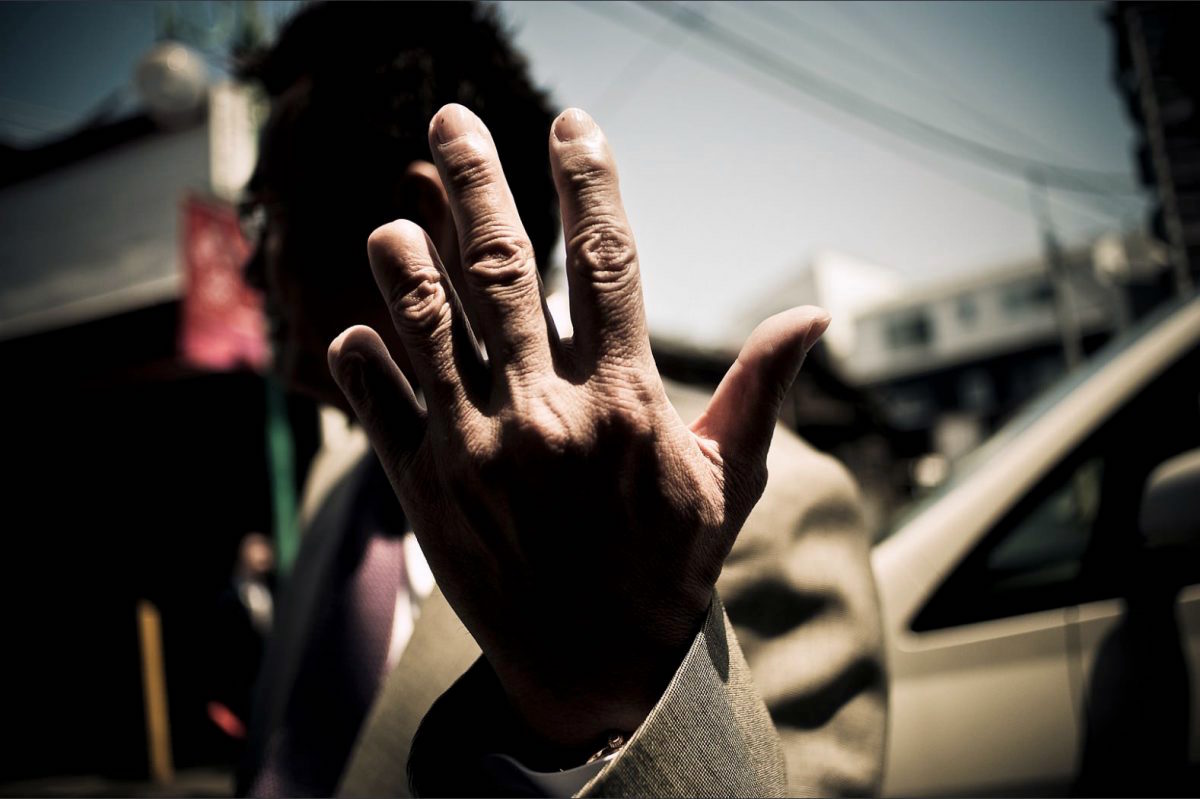
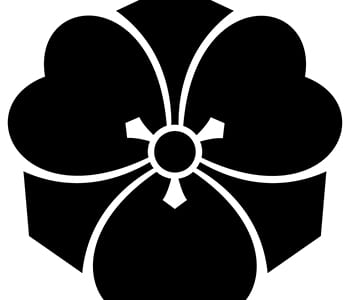
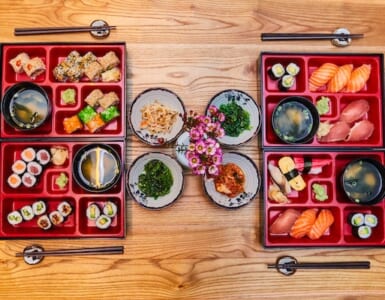
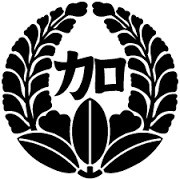


Add comment